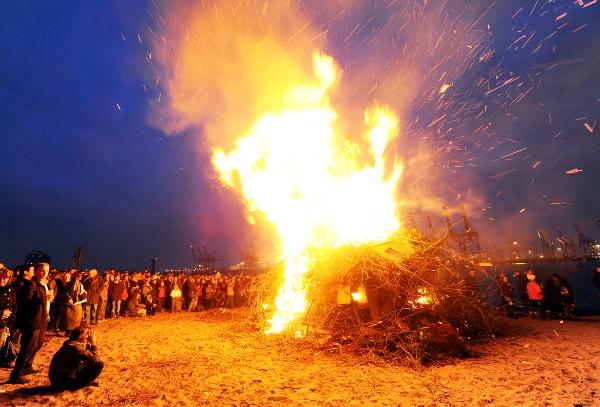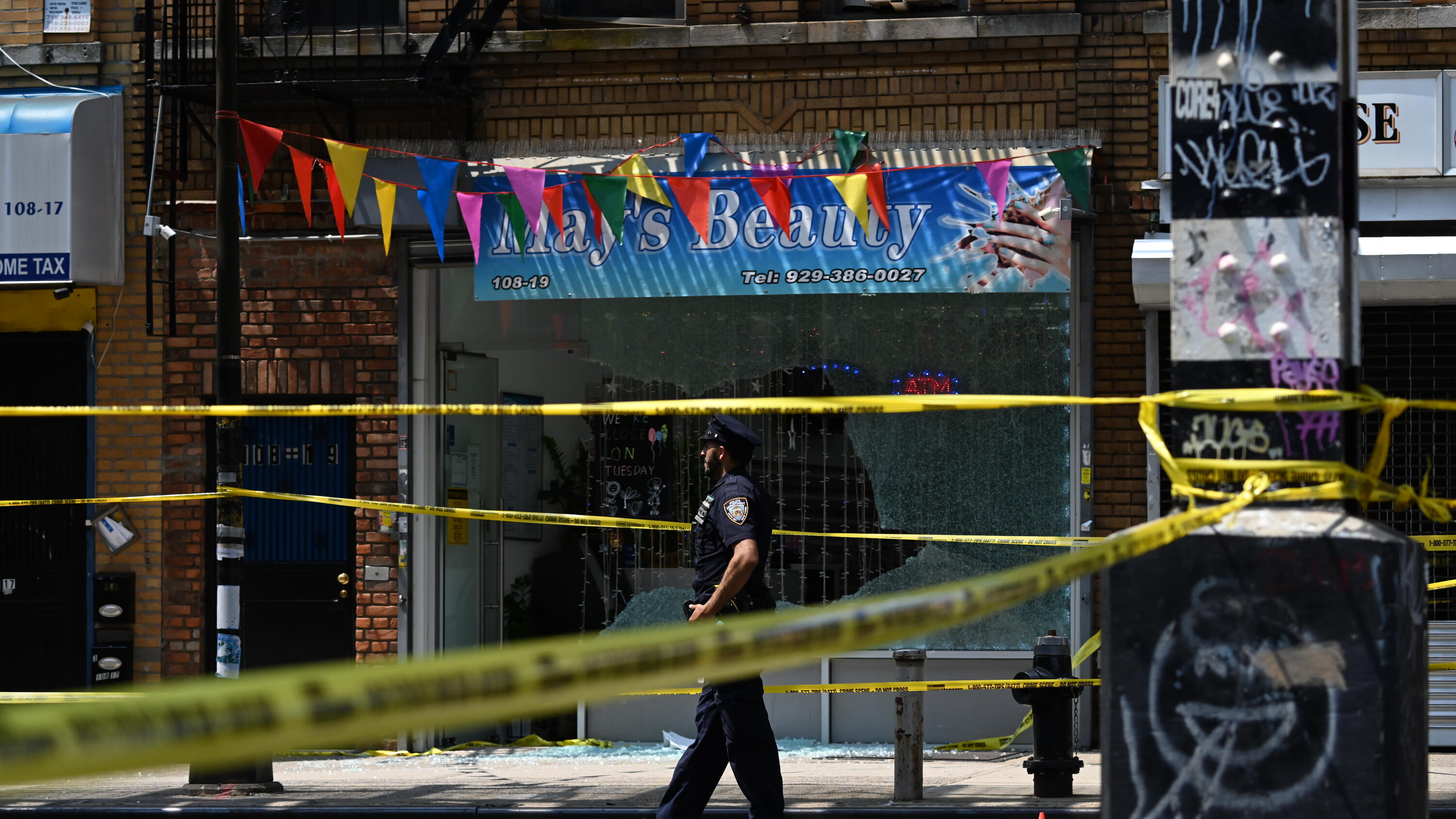Dry Conditions Pose Threat To Easter Bonfire Celebrations

Table of Contents
Increased Fire Risk Due to Dry Weather
Dry weather dramatically increases the risk of wildfires, turning seemingly controlled bonfires into uncontrollable infernos. A fire risk assessment should be your first step before even considering lighting a bonfire. Factors like low humidity, strong winds, and a lack of recent rainfall drastically reduce the fuel moisture content of vegetation. This means that dry grass, leaves, and other organic materials can ignite easily and burn with incredible intensity.
- Dry vegetation acts as kindling: Dry conditions create a perfect environment for rapid fire spread. Even a small spark can quickly ignite dry grass and leaves, leading to a large and uncontrollable fire.
- Increased difficulty in controlling a fire: In dry conditions, it's exponentially harder to control a fire's spread. What might be a manageable blaze in damp conditions can quickly become a raging wildfire in dry weather.
- Embers ignite nearby dry brush or structures: Embers from a bonfire can easily be carried by the wind, igniting nearby dry brush, trees, fences, or even buildings. This presents a significant risk to both property and life.
Essential Bonfire Safety Precautions
To mitigate the risk of wildfires, taking stringent safety precautions is paramount. Responsible bonfire management is not just a suggestion; it's a necessity during periods of high fire danger.
- Check local fire restrictions and obtain necessary permits: Before lighting any fire, contact your local authorities to check for any fire bans or restrictions. Many areas require permits for bonfires, especially during dry periods. Failure to comply can result in hefty fines.
- Clear a wide area around the bonfire site of flammable materials: Create a significant firebreak by clearing a wide radius (at least 10 feet) around your bonfire site. Remove all dry leaves, grass, twigs, and other combustible materials.
- Keep a water source (hose, bucket) readily available: Always have a readily available water source – a garden hose connected to a water supply or several buckets of water – to quickly extinguish any flames that escape the designated area.
- Never leave a bonfire unattended: Never, under any circumstances, leave a bonfire unattended. Someone should always be present to monitor the fire and ensure its safety.
- Ensure the bonfire is completely extinguished before leaving: Before leaving the bonfire site, completely douse the embers with water, stirring them to ensure all heat is gone. Check for lingering heat and smoke to ensure the fire is completely extinguished.
- Have a fire extinguisher nearby: Keep a fire extinguisher readily accessible in case of emergencies. Know how to use it properly.
Local Regulations and Permits
Checking local fire regulations and obtaining necessary permits is crucial. Local authorities often issue fire bans or restrictions during periods of high fire danger. These restrictions might limit bonfire sizes, locations, or even prohibit them entirely. Visit your local council or fire department website to find out about current regulations and how to obtain the necessary permits for a controlled burn.
Alternatives to Traditional Bonfires
If dry conditions persist, consider safer alternatives to traditional bonfires for your Easter celebrations. There are many ways to enjoy Easter without risking a wildfire.
- Organize an Easter egg hunt: A classic Easter activity that's fun for all ages and completely fire-safe.
- Have an Easter picnic: Enjoy a delicious meal outdoors in a safe and controlled environment.
- Attend a community Easter event: Many communities host Easter events with organized activities, eliminating the need for a bonfire.
- Enjoy Easter crafts and games indoors: Engage in creative activities like Easter egg decorating or board games.
Conclusion
The heightened risk of wildfires due to dry conditions necessitates prioritizing safety during Easter bonfire celebrations. By following the essential safety precautions outlined above and considering safer alternatives if dry conditions persist, you can ensure your Easter bonfire is a safe and enjoyable event. Prioritize safety this Easter and avoid unnecessary fire risks. Celebrate Easter responsibly: Check fire restrictions and practice safe bonfire techniques. Remember to always check your local authority's website for current fire bans and permit requirements before lighting any bonfire. Let's make this Easter a happy and safe one for everyone.

Featured Posts
-
 Will Conforto Follow Hernandezs Lead In Los Angeles
May 18, 2025
Will Conforto Follow Hernandezs Lead In Los Angeles
May 18, 2025 -
 Is Jackbit The Best Crypto Casino For 2025 A Comprehensive Guide
May 18, 2025
Is Jackbit The Best Crypto Casino For 2025 A Comprehensive Guide
May 18, 2025 -
 Czy Polacy Ufaja Trumpowi W Kwestii Ukrainy Wyniki Nowego Sondazu
May 18, 2025
Czy Polacy Ufaja Trumpowi W Kwestii Ukrainy Wyniki Nowego Sondazu
May 18, 2025 -
 Nyc Creeps Groping Assault Details Of Brooklyn Incident
May 18, 2025
Nyc Creeps Groping Assault Details Of Brooklyn Incident
May 18, 2025 -
 Get The Daily Lotto Results For Thursday April 17th 2025
May 18, 2025
Get The Daily Lotto Results For Thursday April 17th 2025
May 18, 2025
Latest Posts
-
 Misir In Gazze Ye Yoenetim Teklifi Ve Uluslararasi Tepkiler
May 18, 2025
Misir In Gazze Ye Yoenetim Teklifi Ve Uluslararasi Tepkiler
May 18, 2025 -
 Jusuf Kalla Upaya Perdamaian Israel Palestina Dan Ucapan Selamat Ulang Tahun Dari Gaza
May 18, 2025
Jusuf Kalla Upaya Perdamaian Israel Palestina Dan Ucapan Selamat Ulang Tahun Dari Gaza
May 18, 2025 -
 Ketegangan Israel Vatikan Analisis Dendam Israel Atas Paus Fransiskus
May 18, 2025
Ketegangan Israel Vatikan Analisis Dendam Israel Atas Paus Fransiskus
May 18, 2025 -
 Htb Alhrb Ela Nar Alsrae Drast Tarykhyt Wjghrafyt
May 18, 2025
Htb Alhrb Ela Nar Alsrae Drast Tarykhyt Wjghrafyt
May 18, 2025 -
 Gazze Nin Gelecegi Misir In Yoenetim Oenerisinin Reddi Ve Alternatifler
May 18, 2025
Gazze Nin Gelecegi Misir In Yoenetim Oenerisinin Reddi Ve Alternatifler
May 18, 2025
